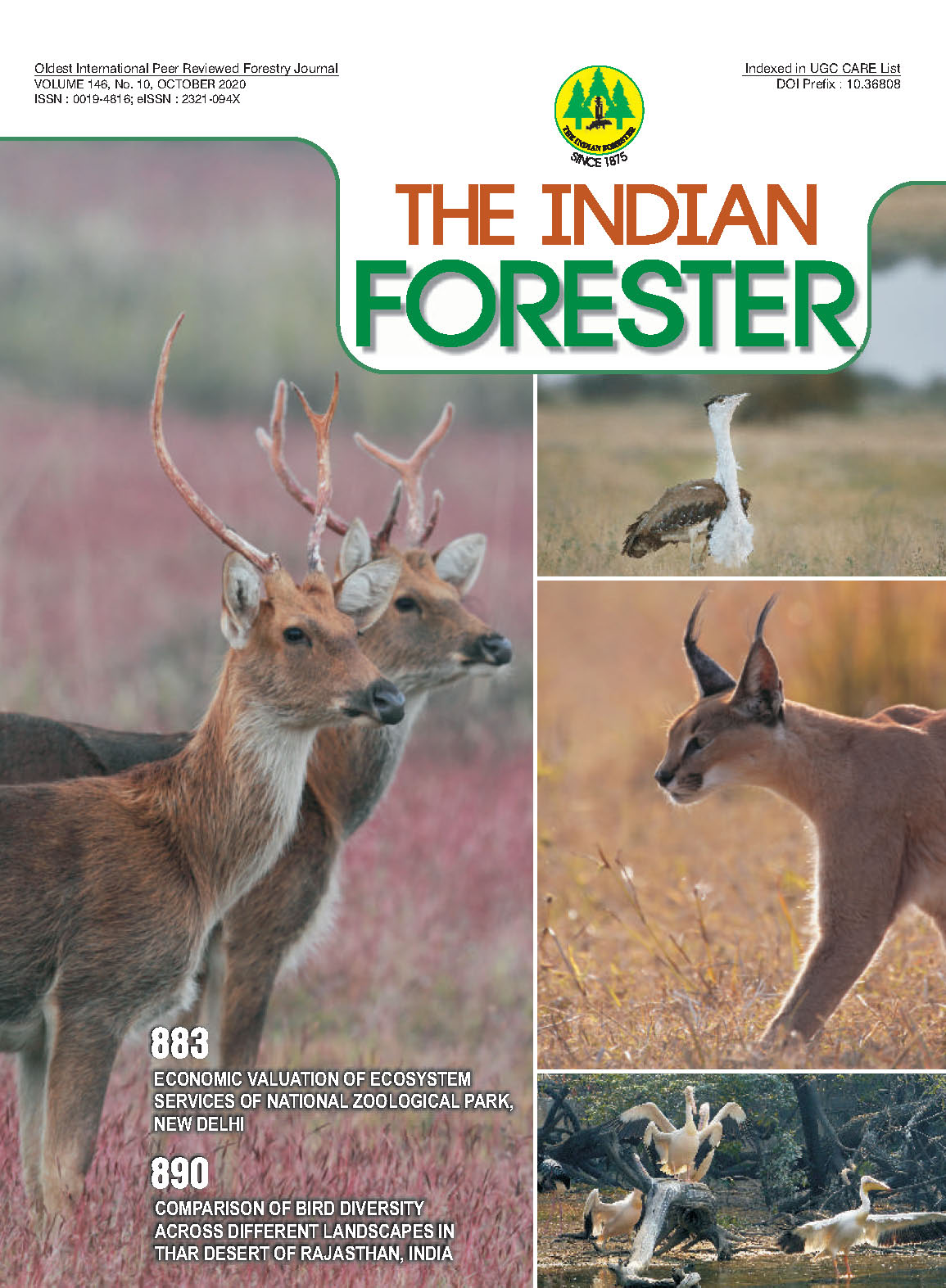An Updated Checklist of Avifauna found in and around Chilika Lake, Odisha, India
DOI:
https://doi.org/10.36808/if/2020/v146i10/155437Keywords:
Avifauna, Chilika Lake and Status.Abstract
Chilika lake is one among the 467 important bird area (IBA) sites in India. The present study addresses the updated checklist ofavifauna of Chilika Lake, which is world's second largest brackish water Lake. Surveys were conducted during October 2006 and December 2016.The birds were recorded during the total count by boat, walking along the shore, block count, bird ringing, banding and satellite telemetry techniques. A total of 222 species ofavifauna of 62 orders and 20 families were recorded in and around study area. Nine (9) new bird species (River Lapwing Vanellus duvaucelli, Glossy Ibis Plegadis facinellus, Indian Thick-knee Burhinus indicus, Alexandrine Parakeet Pstittacula eupatria, Chestnut-headed Beeeater Merops leschenaultia, Wire-tailed Swallow Hirundo smithii, Whiterumped Munia Lonchura striata, Scaly-breasted Munia Lonchura punctulata and Black-hooded Oriole Oriolus xanthornus) were recorded first time in the study area. Out of total documented species, most of them were Least concern (201) followed by Near Threatened (17), Vulnerable (2) and Endangered (2) category of the International Union of Conservation of Endangered Fauna and Flora. The endangered species recorded from the study area were Pallas's fish eagle (Haliaeetus leucoryphus) and Great knot (Calidris tenuirostris). Prawn gharries, poaching, poisoning, illegal fishing, over fishing (operate zero size mesh net), habitat degradation and otheranthropogenic activities are the major threat to the conservation of avifauna in and around Chilika lake.References
Anon. (2002). Conservation of Chilika - An overview. Chilika Wetland International Newsletter, 1:3-5.
Balachandran S., Sathiyaselvam P. and Panda S. (2009). Bird atlas of Chilika. 1st ed. Mumbai; Bhubaneshwar: Bombay Natural History Society; Chilika Development Authority, pp 1-326.
Bibby C.J., Burgess N.D., Hill D.A. and Mustoe S.H. (2000).
Bird Census Techniques- Second Edition. Academic Press, London.
BirdLife International (2018). Website URL: http://datazone.birdlife.org/sowb/spotthreatbirds Accessed on 24 Dec. 2019.
Clements J.F. (2008). The Clements checklist of Birds of World. Cornell University Press, U.S.A.
Down to earth (2020). https://www.downtoearth.org.in /news/wildlife-biodiversity/1-million-migratory-birds-countedatodisha-s-chilika-lake-68683.
Gregory R.D., Noble D., Field R., Marchant J.H., Raven M. and Gibbons D.W. (2003). Using birds as indicators of biodiversity. OrnisHungarica. 12-13:11-24.
Grimmett R., Inskipp C. and Inskipp T. (2011). Helm field guides Birds of the Indian subcontinent. Oxford University Press. Delhi. Pp 1-528.
Hussain S.A., Mohapatra K.K. and Ali S. (1984). Avifaunal Profile of Chilika Lake a case for Conservation. Bombay Natural History Society Technical Report No.4, Avifauna 1984.
IUCN (2020). The IUCN Red List of Threatened Species. Version 2019-3. https://www.iucnredlist.org.
Kar S.K. and Sahu H.K. (1993). Preliminary study on ecology ofaquatic birds in Chilika lake, Orissa. In: Bird Conservation: Strategies fo rth e nineties and beyond. (Eds. Verghese A., Sridhar S. and Chakravarthy V. K.) Ornithological Society of India, Bangalore. Pp 62-64.
Loiselle B.A. and Blake J.G. (1991). Temporal variation in birds and fruits along an elevational gradient in Costa Rica. Ecology 72: 180-193.
MacKinnon S. and Phillips K. (1993). A Field Guide to The Birds of Borneo, Sumatra, Java and Bali. Oxford University Press, Oxford, U.K.
MacLeoda R., Herzogb S.K., Maccormicka A., Ewinga S.R., Brycea R. and Evans K.L. (2011). Rapid monitoring of species abundance for biodiversity conservation: Consistency and reliability of the MacKinnon lists technique. Biological Conservation, 144: 1374-1381.
Norris D.R. and Marra P.P. (2007). Seasonal interactions, habitat quality and population dynamics in migratory birds. Condor, 109: 535-547
Praveen J., Jayapal R. and PittieA. (2016). A check list of the birds of India. IndianBIRDS, 11 (5&6): 113-172.
Rahmani A.R., Islam M.Z. and Kasambe R.M. (2016). Important bird and biodiversity areas in India: Priority sites for conservation (Revised and updated). Bombay Natural History Society, Indian Bird Conservation Network, Royal Society for the Protection of Birds and BirdLife International (UK), 1992.
Rasmussen PC. and Anderton J.C. (2012). Birds of South Asia: The Ripley guide. 2 vols. 2nd ed. Pp. 1-378, 1-683. Washington D.C., Michigan and Barcelona: Smithsonian Institution, Michigan State University and Lynx Editions.
Trisal C.L. and Chauhan M. (1998). Chilika Lake: Guidelines for Ecotourism Development. Wetlands International- South Asia, New Delhi, India. Pp 54.
Downloads
Downloads
Published
How to Cite
Issue
Section
License
Unless otherwise stated, copyright or similar rights in all materials presented on the site, including graphical images, are owned by Indian Forester.





